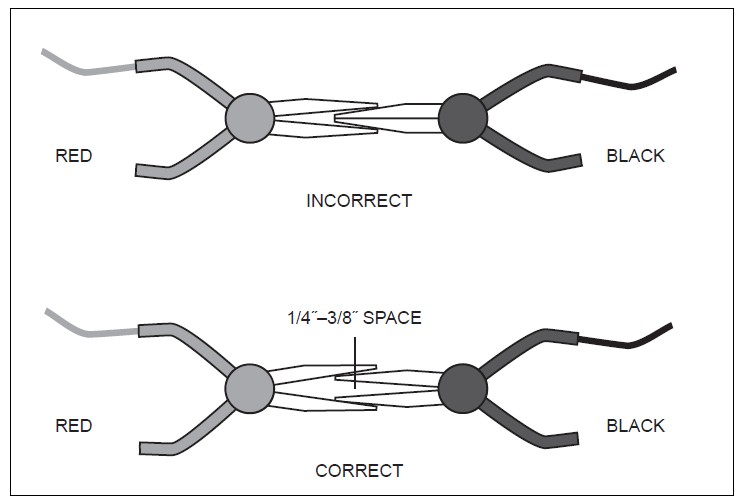News
Method For Verifying Short (Zero) Connection When Using Kelvin Klips
Kelvin Klips are four-terminal connector clips designed to provide rapid, precise connections to a device or unit under test (DUT/UUT). Used properly, Kelvin Klips eliminate measurement errors caused by lead resistance and/or improper connections.
Kelvin Klips Require Zero Verification
To ensure proper operation of an instrument with Kelvin Klips, a short (Zero) verification should be part of your standard work practices. This ensure that all four wires of a Kelvin Klip set are intact and firmly operational. Without this verification, you run the risk of significant measurement error.

Procedures for a Proper Short (Zero) Test
Short (Zero) tests should be performed when:
- The test instrument/meter has not been used for a period of 6 hours or more.
- The test set-up has been changed.
- The DUT/UUT has changed significantly.
- Test procedures call for such verification.
- Uncertainty or change has been introduced into the test set-up or environment.
The basic procedures follow:
- Apply power to the instrument and allow adequate warm-up. In a temperature controlled lab, you should allow at least 20 minutes warm-up time for stable readings. If the instrument’s environment is not well controlled, allow 60 minutes for warn-up.
- Connect the leads of the Kelvin Klips to the input jacks.
- Establish instrument settings (Measurement function in lowest range)
- Short the Kelvin Klips together as figure below (Creating a 1/4 ~ 3/8 inch space between its jaws, Do not clamp Kelvins Klips directly together).
- Verify that the reading on the digital instrument display is within 5 counts of zero.
Source: TMC
Others
- TECOTEC GROUP ATTENDED SHIMADZU’S SERVICE MANAGER MEETING IN 2022
- TECOTEC HANDED OVER EDX-7000 X-RAY FLOURESCENCE SPECTROMETER AT NIDEC CHAUN CHOUNG VIETNAM
- INSTALLATION OF CHIP PROCESSING SYSTEM – LANNER/ GERMANY
- TECOTEC completed installation of EDX-LE Energy dispersive X-ray Fluorescence spectrometer at DYT Vina
- TECOTEC DELIVERED AND INSTALLED THE 2ND X-RAY FLUORESCENCE SPECTROMETER - EDX-LE PLUS AT TABUCHI
- TECOTEC Group has handed over PDA-7000 Optical Emissions Spectrometers for Nihon Plast Vietnam
- Bowman XRF Coating Measurement System For Electroless Nickel Plating
- TECOTEC DELIVERED AND INSTALLED SMX-2000 SYSTEM TO NIDEC TECHNO MOTOR VIETNAM



